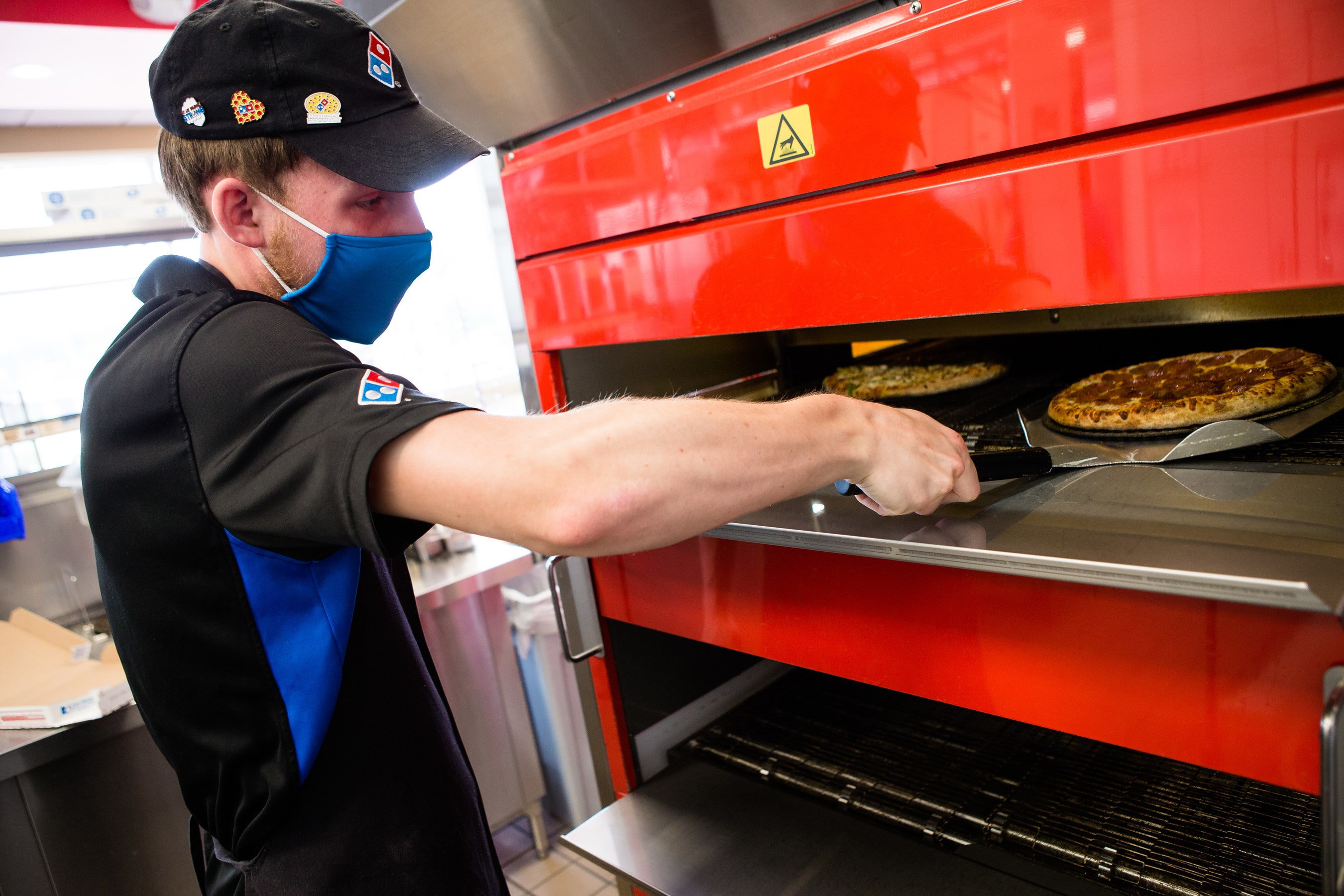
Domino’s Pizza Inc. has announced that its corporate and franchise stores in the US are set to fill more than 20,000 positions, including delivery experts, pizza makers, customer service representatives, managers and assistant managers.
“It’s a privilege to be able to feed families across the country and provide them with a small sense of normalcy during this pandemic,” said Tom Curtis, executive vice president of operations and support at Domino’s, in a statement.
This follows news that Burger King franchises plan to hire 3,000 via a virtual job fair taking place this month, and that McDonald’s Corp, Chipotle Mexican Grill Inc and Dunkin’ Brands Group Inc. have all added tens of thousands of workers in recent weeks.
An industry-wide turnaround?
At face value, these announcements can be seen to signify a genuine turnaround for the struggling quick service restaurant (QSR) and food delivery industry. However, as a successful company within a crowded sector, Domino’s was already competent in delivery services: success was a natural expectation. According to Arlene Spiegel FCSI, president of Arlene Spiegel & Associates, it was simply the nature of the company that led to its growth in the circumstances of Covid-19, rather than the nature of the industry.
“Domino’s success in the crowded pizza sector was and is based on its core competency – delivery. They are masters at logistics and convenience. It is not surprising that they are well-poised to address the growing demand for convenience,” says Spiegel.
“The need to hire massive numbers of additional workers is proof-positive that they have confidence in the growth of their business.”
Bill Main FCSI of Bill Main & Associates also pointed out that the success of Domino’s is company specific, rather than an indication of industry-wide significance.
“Domino’s has long been considered a bellwether for the fast-food industry. They are the purest essence of fast-food, and in many ways, more significant and important than McDonald’s going forward into 2021. Domino’s business model is perfectly positioned to address the sequester in place (SIP) guidelines imposed by the pandemic,” says Main.
William Bender FCSI, founder and principal at W. H. Bender and Associates, also commented on the hire being a short-term solution.
“This is positive in the short term for people that gain employment. This hiring wave is a short-term transition in the marketplace, until we fully enter a post-pandemic period with vaccine, and it proves to be safe and minimizes risk”.
Companies need to stay flexible
For the industry to follow Domino’s’ trend, operators’ flexibility is vital. In such an uncertain period, consumer behavior is simply unpredictable in the long term.
Domino’s capabilities to respond to consumer needs have been shown in their introduction of contactless delivery and ‘carside’ delivery options, implemented during the pandemic to safely boost their delivery sales while other restaurants’ dine in options are closed off.
For Spiegel, the Domino’s announcement “signifies to other QSR and fast-casual operators that they should continue to invest to respond to the demand. It is too early to predict consumer behavior regarding the preference to dine-in vs dine-out. Operators need to be flexible and ready to serve regardless of how obstacles and opportunities present themselves.”
Bender also comments on the need to re-evaluate based on consumer needs. “The restaurant industry needs to analyze each segment’s economic model. The business restaurant models operated prior to the pandemic will need to be redesigned to models that work for each brand’s guests.”
“All facets of the restaurant space, from the landlord to owner or management team, will have to rethink operations, marketing, and most importantly the team and guest experience. It’s really the opportunity to leapfrog and create bespoke designs that will create untold collaboration in the foodservice industry.”
Eat-in vs. eat-out
The success of Domino’s and increase in demand for food delivery during the pandemic does not necessarily indicate an industry-wide pivot towards prioritising takeaway over dine-in, which remains the industry’s main selling point.
Main remarks on the importance of companies upholding the dine-in experience: “Casual and full service, although diminished, will always represent, long term, at least 50% of commercial foodservice revenues because they are experiential wonderfully interactive and a critical part of the social fabric of our future culture”
Spiegel agrees that the customer experience should not be abandoned. “Where dine-in is possible, they [restaurants] should put great emphasis on creating memorable experiences to reinforce their brand.”
Refining delivery services
While the dine-in experience should not be abandoned, companies still need to work on adapting and improving their delivery services. Such is clear from news that NPC International, Pizza Hut’s largest franchisee with 1,227 units, will seek a buyer for part or all of its Pizza Hut business, according to bankruptcy court filings.
The company obtained permission from Pizza Hut parent Yum! Brands to shutter as many as 300 underperforming restaurants, most of them dine-in units that haven’t been able to fulfil demands for takeout and delivery.
“Restaurants in all sectors and level of service need to have a strong take-out and delivery capability to be able to compete,” says Spiegel.
The news from NPC International is a lesson to be learnt for companies wishing to adapt and pivot under new circumstances.
Romilly Leech
